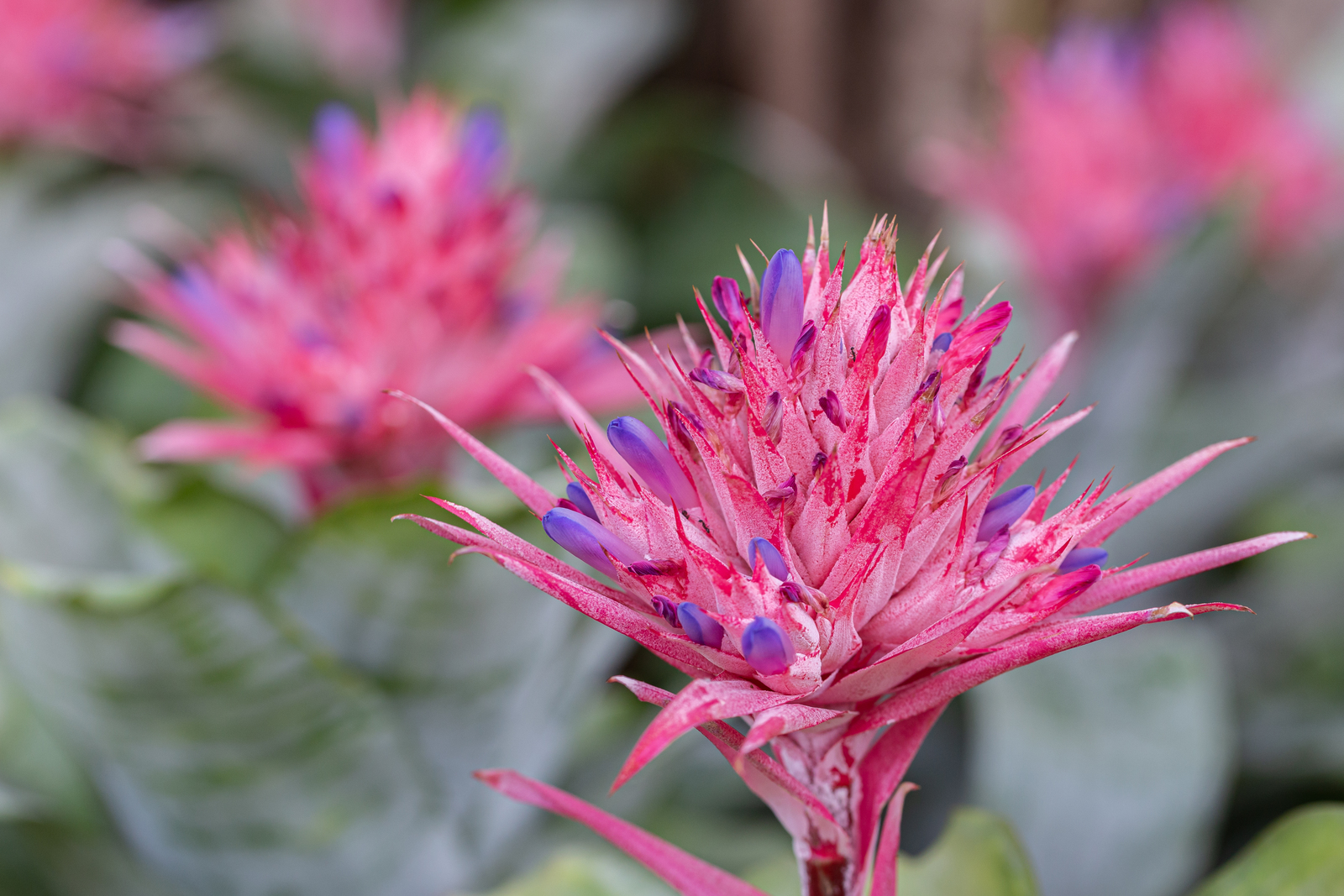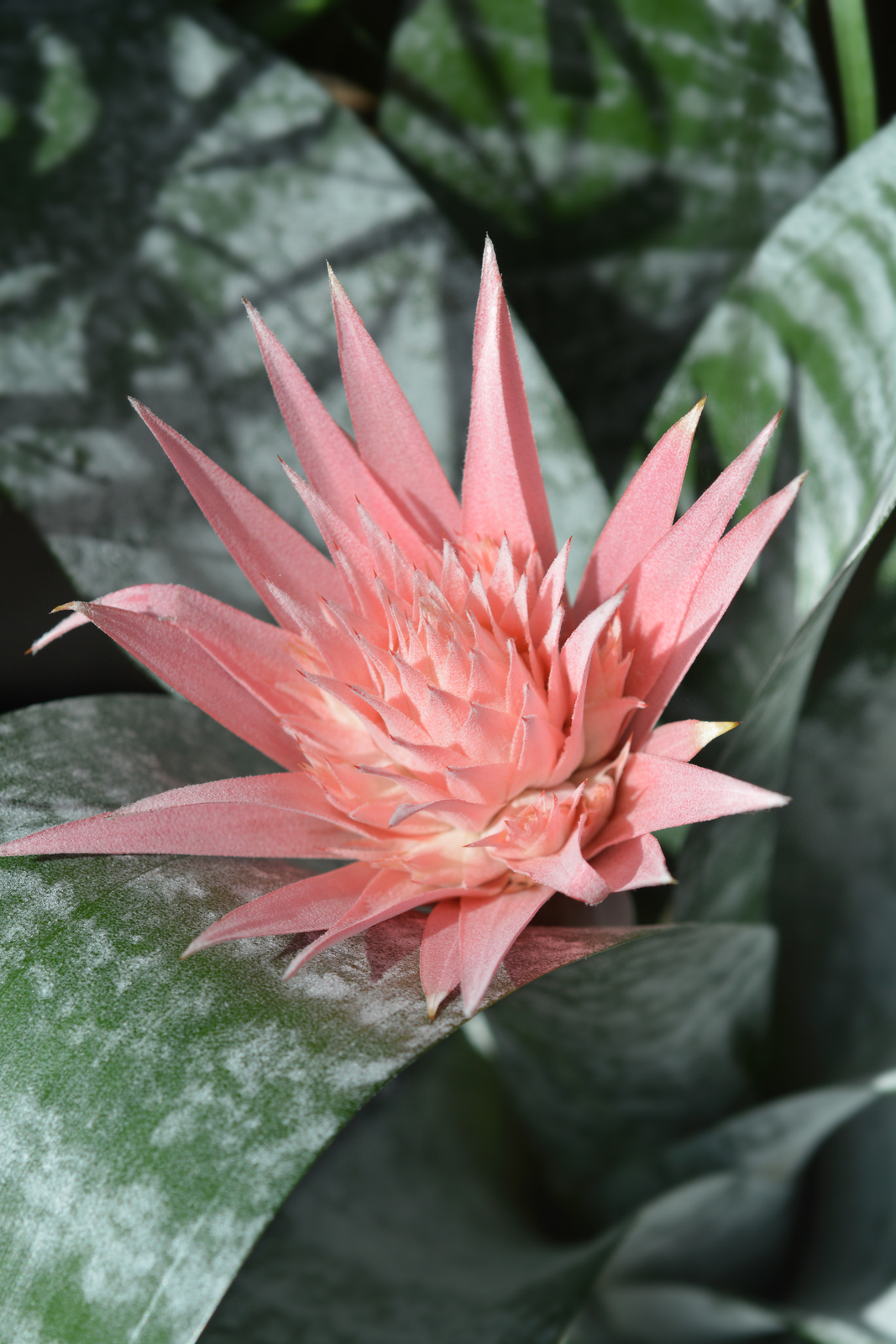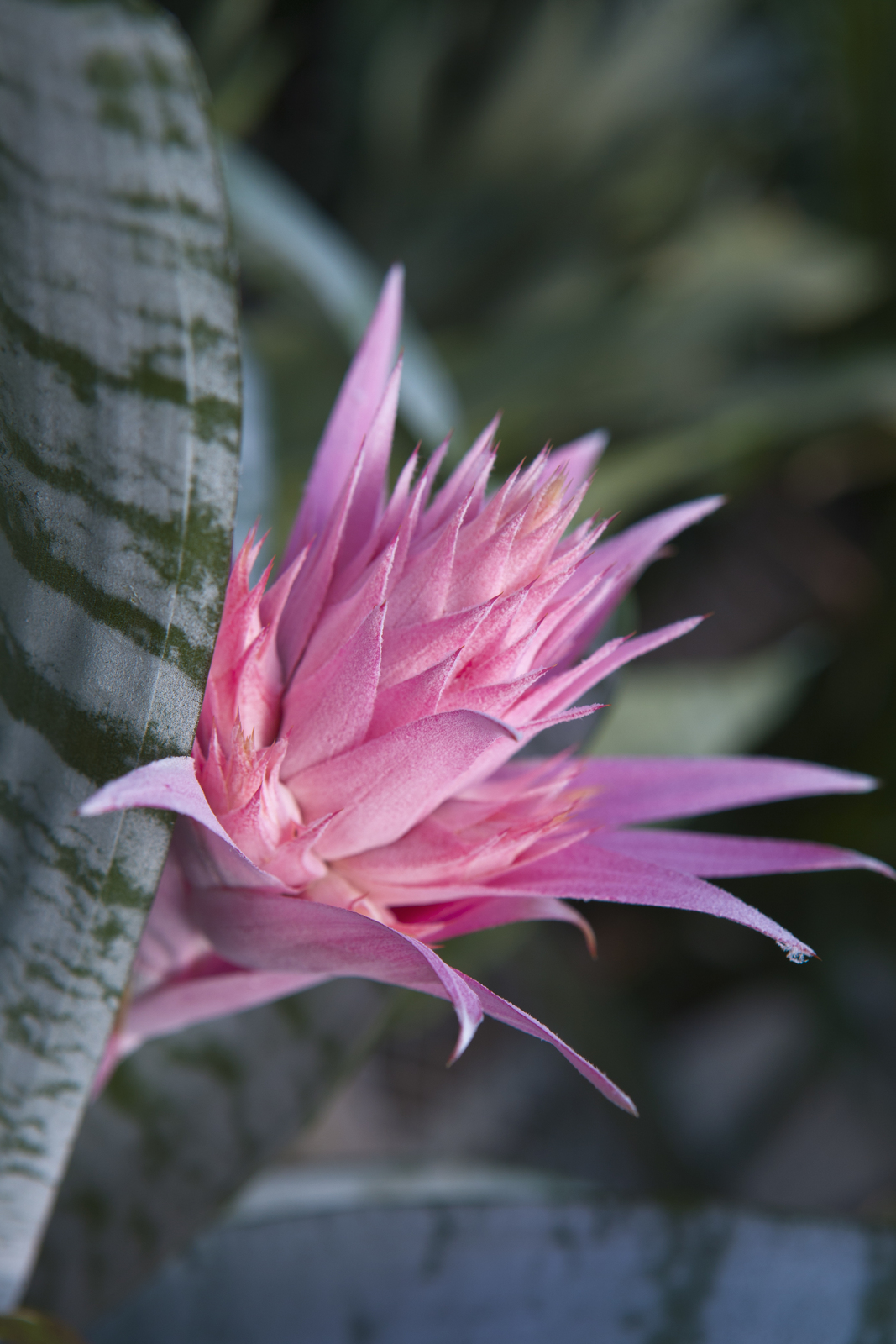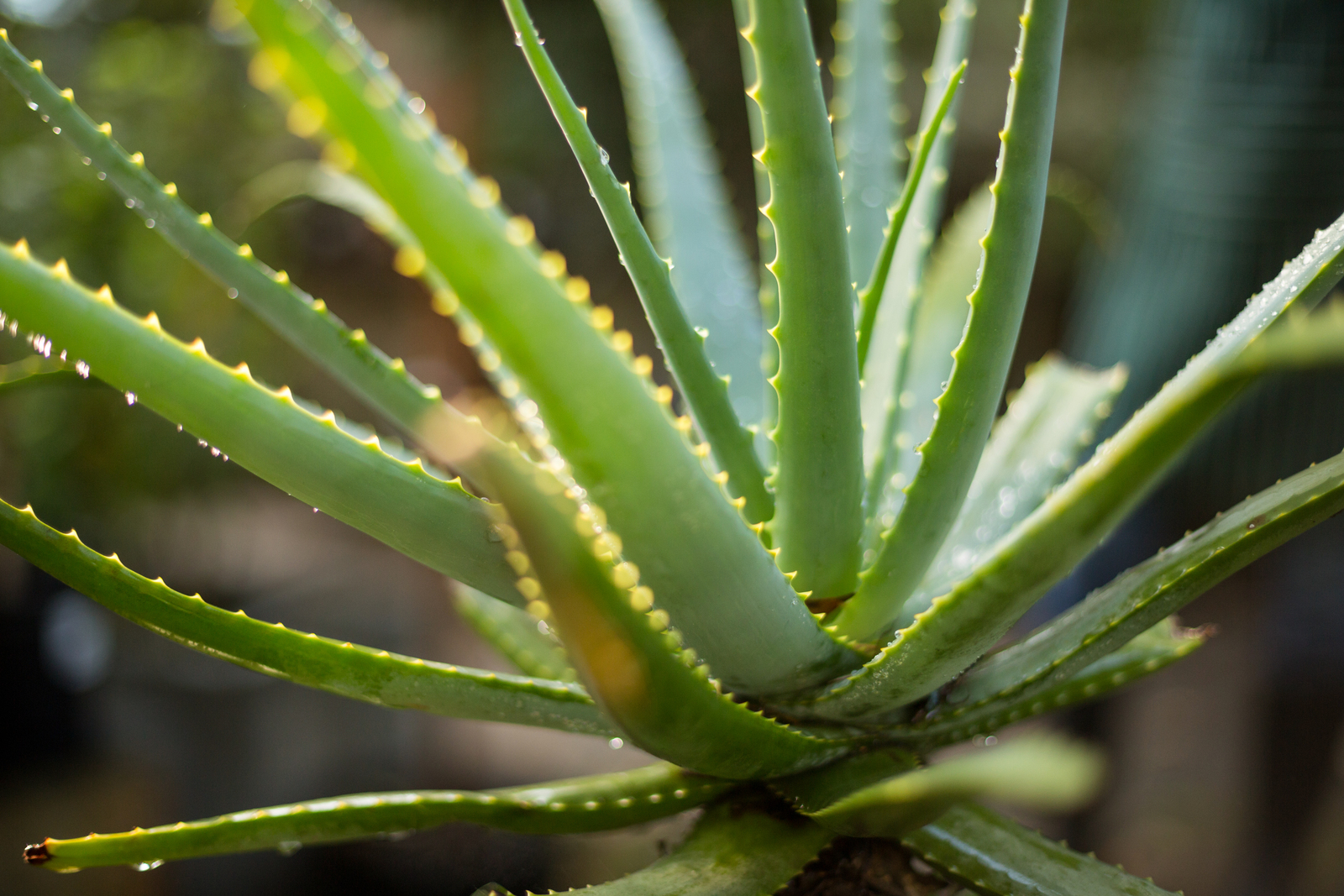Aechmea Fasciata - Silver Vase Plant
Aechmea fasciata (also known as the Urn Plant or Silver Vase Plant) are one of the most popular bromeliad species.
They are commonly kept indoors as houseplants; however, they can be displayed outdoors as long as they are brought inside before the first frost.

The dark green arching leaves are banded with silver-white, and have a waxy finish. The smooth finish helps the plant gather water in its reservoir.
Individual leaves can grow to 15 in/37.5 cm in length, and bromeliad height can reach 20 in/50 cm. Urn Plants produce beautiful, pink bracts containing blue flowers that persist for 4 to 6 weeks. The blue flowers are short-lived and eventually turn red.
Aechmea fasciata will reach a maximum height of approximately 3 feet with a spread of no more that 2 feet.
There are some Aechmeas that feature colorful, banded leaves, while others can have leaves with gray scales.
Aechmea Fasciata Plant Care

Lighting Requirements
Silver Vase bromeliad plants require bright light with some directAechmea Fasciata sun. When moving this plant outside, take care to the plant to direct sun slowly. This will prevent scorched leaves.
Light & Temperature Requirements
Urn Plants thrive in very bright light. In the summer, plants enjoy outdoor conditions (as long as the temperatures range between 70 - 85° F / 21 - 30° C. Bring plant indoors from fall to early spring. Room temperature should average 65 - 75° F / 18 - 24° C.
Fertilizer
In the summer, feed monthly with a liquid fertilizer mixed at ½ the normal strength. Spray it on the leaves and fill the reservoir at least 1 in / 2.5 cm deep. Empty the reservoir and fill with fresh water after one week. In winter, fertilize bromeliad every other month.
Water
Add water to the reservoir when it dries out – at least every ten days. Do not allow standing water to sit in the reservoir – change it weekly if necessary. Lightly water the roots on a weekly basis in the summer. Aechmea fasciata will require less water in the winter. Keep soil slightly moist - do not allow the roots to dry out completely.
Bromeliads prefer humidity. You can set plants on a tray of pebbles or small rocks and add a small amount of water to increase ambient humidity.
You can also add humidity by frequently misting the plant (be careful not to over mist). Excessive misting can cause issues with rot.
Soil
Use an orchid potting soil or a bromeliad mix. Add peatmoss to an equal volume of general house plant mix for well draining combination.
You can also use equal parts of Coarse Sand, Peat Moss, and Leaf Mold.
Another option is equal parts of Perlite or Sharp Sand, Peat Moss, and Fir Bark.
Propagation
Propagate bromeliads by separating the offsets from the base of the plant. Once the pup is approximately 6 inches ling, gently separate it from the parent and plant it in a 6 inch pot.
If you live in a tropical or subtropical climate, you can plant bromeliads in teh landscape.
Soil should retain moisture as well as have good drainage.
A location with partial shade is best. Leave a space of approximately 2 feet surrounding each plant.
Longetivity
Silver Vase bromeliads reach full maturity in three to four years.
Repotting
Repot young plants annually in the spring until they fill an eight inch pot.
Blooming
Once young plants (pups) grow to bloom size, you can encourage blooming by using a ripe apple and a clear plastic bag.
- Place your bromeliad in a large plastic bag.
- Add a ripe apple to the bag: the apple helps to induce the bromeliad to flower by emitting ethylene gas.
- Close the bag.
- Place the bag containing the apple and plant in a shady location for 7 - 10 days, remember: NO DIRECT SUNLIGHT.
- Remove the plant from the bag after the 7 - 10 days.
The bromeliad typically begins to flower within 6 - 8 weeks.
Selection
In addition to the mottled green leafed form, ‘Purpurea’ features leaves brushed with maroon. ‘Variegata has creamy stripes on the leaves.
Silver Vase Pests or Diseases
Since this plant holds water it can attract gnats and mosquitos.
It is also susceptible to fungal diseases: leaf spots, root rot, and crown rot.
Brown leaf tips can appear if soil is too dry or the plant is kept in a cold location.
Uses and Display Tips

When buying an Urn Plant, choose one without the blue flowers. Blue flowers are an indication that the pink bract has been established for a while and may fade in the near future.
Keep in mind, this plant can grow top heavy, so be sure the container is appropriate.
Display near plants with lush foliage (such as ferns or flowering plants) and similar lighting requirements. Young offsets can be mounted on a piece of wood for one season.
- Home
- Foliage Plants
- Aechmea Fasciata



